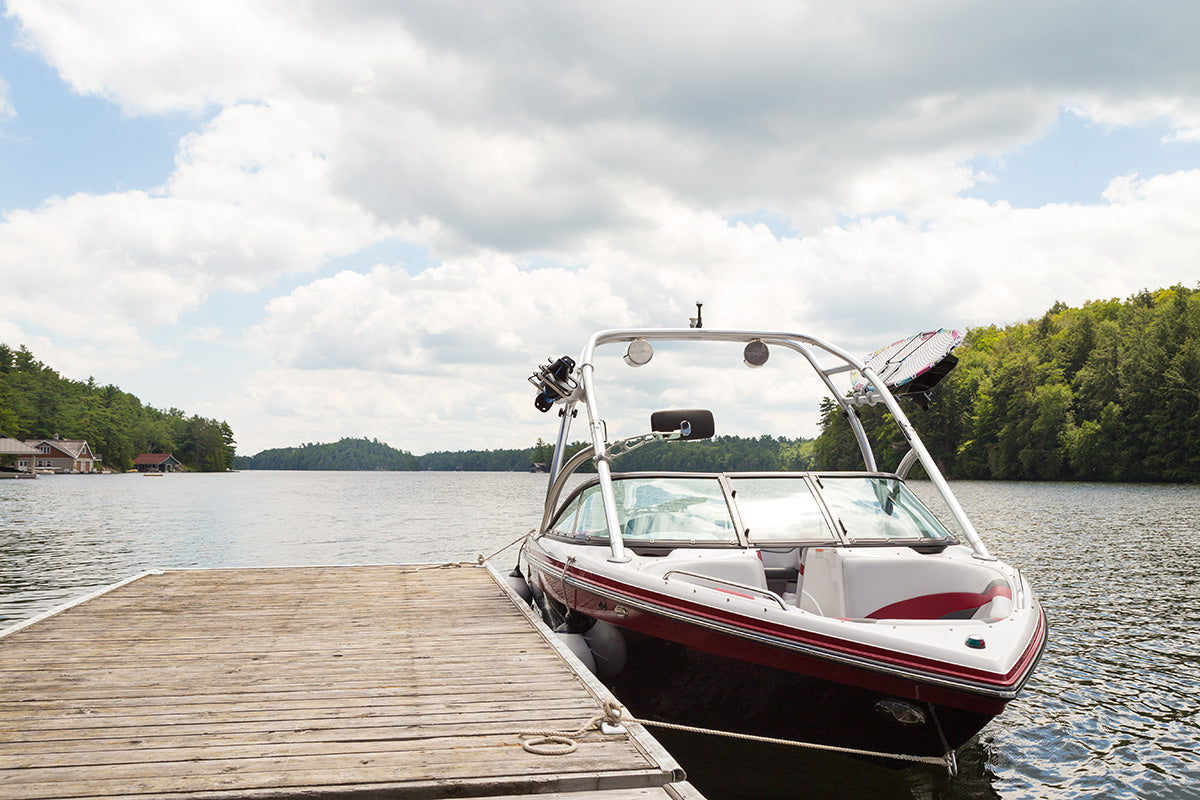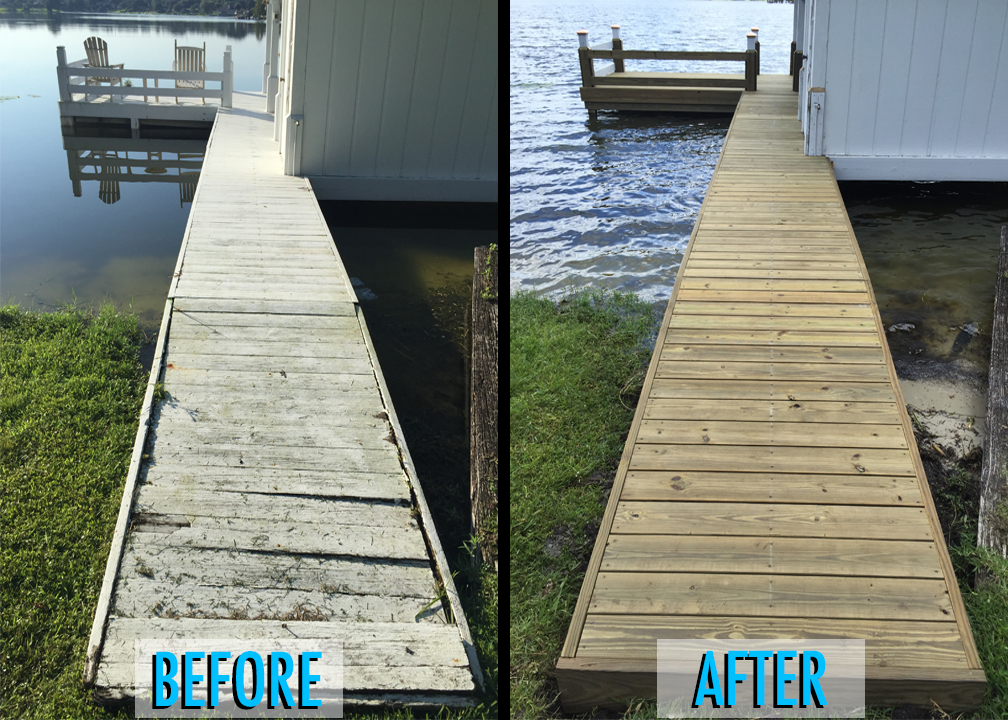DIY Tips for Simple Dock Repairs You Can Handle
DIY Tips for Simple Dock Repairs You Can Handle
Blog Article
Effective Dock Repair Work Techniques: Ensuring Structural Honesty
Making certain the structural stability of anchors through efficient repair methods is extremely important for the longevity and security of aquatic facilities. Consequently, picking the right repair work products, such as corrosion-resistant alloys and composite materials, is vital for durability.
Evaluating Dock Damages
Analyzing dock damage is a vital very first step in ensuring the structural stability and security of any kind of docking center. This first evaluation involves a detailed examination to recognize both noticeable and hidden damages. Secret elements to take a look at consist of the dock's structure, pilings, outdoor decking, and equipment. Each part has to be scrutinized for signs of wear, rot, corrosion, or other forms of deterioration that can endanger the architectural honesty.
Architectural engineers or qualified inspectors typically execute these analyses utilizing specialized strategies and devices. Undersea assessments may employ finder equipment or from another location ran vehicles (ROVs) to detect immersed damage. Over water, visual inspections are enhanced by utilizing dampness meters and other analysis devices to uncover underlying concerns not right away noticeable to the naked eye.

Choosing Repair Work Materials
Choosing the proper repair service products is an essential action in the dock repair procedure, one that straight influences the durability and performance of the repaired structure. Material selection must be driven by factors such as environmental conditions, load-bearing demands, and compatibility with existing dock components. Wood is a typical selection for anchors due to its natural resilience and aesthetic allure. Picking the ideal type of timber, such as pressure-treated lumber or normally rot-resistant species like cedar or teak wood, is vital to stand up to aquatic settings.
Along with wood, composite products are progressively popular because of their sturdiness and reduced maintenance needs. Composites, commonly made from a blend of plastic and timber fibers, provide excellent resistance to rot, bugs, and UV damage. For metal anchors, selecting corrosion-resistant alloys such as galvanized steel or marine-grade light weight aluminum is vital to prevent corrosion and ensure structural honesty in saline water conditions.
Epoxy resins and marine-grade sealers are indispensable for repairing splits and sealing joints, supplying a waterproof barrier and improving the dock's total strength. By meticulously choosing high-grade materials, dock repair work can accomplish durable results, consequently guarding against future deterioration and ensuring safe, reputable usage.
Architectural Support Strategies
Reliable architectural support methods are essential in ensuring the stability and durability of dock repair work. One basic technique includes making use of steel or composite reinforcement bars (rebar) within concrete structures. Rebar supplies extra tensile toughness, protecting against splits and dispersing lots a lot more uniformly. This technique is especially effective for docks revealed to hefty tons or severe environmental problems.
Another crucial strategy is the application of fiber-reinforced polymers (FRP) These materials offer high strength-to-weight proportions and exceptional resistance to corrosion, making them ideal for strengthening wooden or concrete docks. FRP can be used in sheets or strips and bound with epoxy materials to improve structural stability.
Bracing and securing systems also play a crucial function in structural support. Cross-bracing, utilizing steel or wooden light beams, can combat side forces, reducing persuading and movement. Anchoring systems, such as helical piers or driven piles, provide a secure foundation by moving loads to deeper, extra steady dirt layers.
Lastly, the combination of load-distribution plates can help distribute weight extra evenly throughout the dock's surface area, reducing local a fantastic read stress factors. These strategies collectively make sure that anchors remain durable and secure, qualified of withstanding the rigors of their functional setting.
Advanced Repair Work Techniques

Another innovative strategy entails undersea welding, which enables fixings to be performed without the demand to dewater the location. This technique is anonymous especially beneficial for attending to architectural problems in submerged dock parts, ensuring minimal disturbance to procedures. Boosted welding methods, combined with robot systems, provide accuracy and dependability, thus extending the lifespan of the dock.
In addition, cathodic defense systems are carried out to avoid corrosion in metal dock frameworks. By utilizing sacrificial anodes or amazed current systems, these strategies successfully alleviate the electrochemical processes that lead to product degeneration.
Finally, advanced surveillance technologies, such as architectural wellness tracking (SHM) systems, give real-time information on the condition of dock frameworks. These systems make it possible for aggressive upkeep and prompt interventions, eventually ensuring the long-term architectural integrity of the dock.
Maintenance and Prevention
Upkeep and prevention are essential principles that underpin the long life and safety of dock structures. Normal examinations are paramount, enabling for very early discovery of damage, potential weak points, and ecological impacts. A proactive strategy, including routine checks for deterioration, rot, and architectural shifts, reduces costly repair services and prolongs the dock's functional life.
Preventative procedures should consist of applying protective finishings to steel parts to defend against rust and making use of cured timber to resist degeneration. In addition, ensuring proper drain and air flow can stop water accumulation, which is a typical source of architectural destruction. Incorporating high quality materials and adhering to supplier guidelines throughout construction and repair stages also play vital functions in boosting toughness.

Educating workers in dock maintenance ideal techniques guarantees consistent application of safety nets. Leveraging technological advances, such as drones for examinations and sensing units for real-time this page monitoring, can better boost upkeep efforts. By focusing on maintenance and avoidance, dock owners can ensure architectural integrity, functional safety, and cost-efficient administration over the dock's lifespan.
Verdict
In verdict, keeping the structural integrity of marine facilities requires detailed dock fixing strategies. Advanced fixing techniques, coupled with regular maintenance practices, guarantee the dock stays risk-free and operational under diverse environmental conditions.
Guaranteeing the structural integrity of docks through effective repair techniques is paramount for the longevity and safety of aquatic centers.Picking the proper repair service materials is an essential step in the dock remediation process, one that directly affects the long life and efficiency of the repaired structure.Reliable architectural reinforcement techniques are crucial in ensuring the security and long life of dock repair services. By focusing on maintenance and avoidance, dock proprietors can make sure structural integrity, functional security, and affordable management over the dock's life-span.
In verdict, preserving the structural honesty of marine facilities demands detailed dock repair work techniques.
Report this page